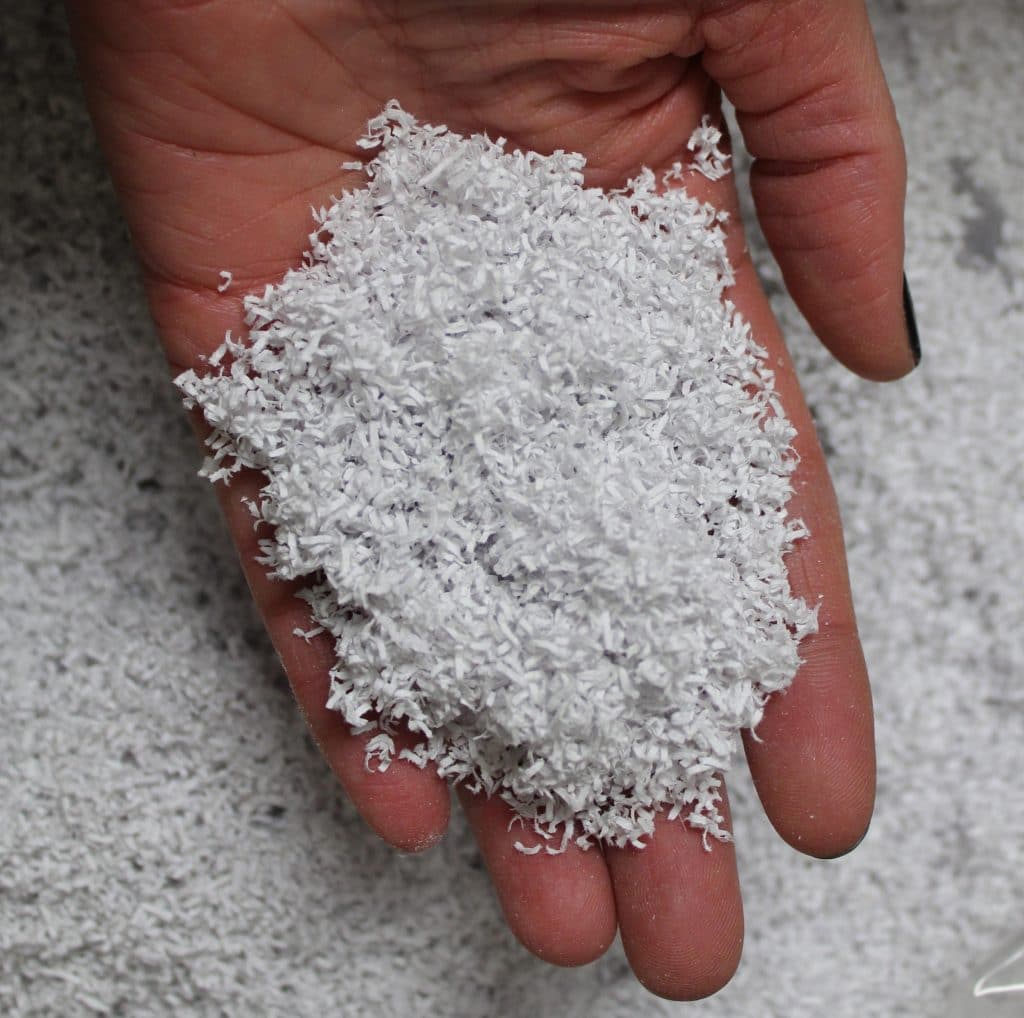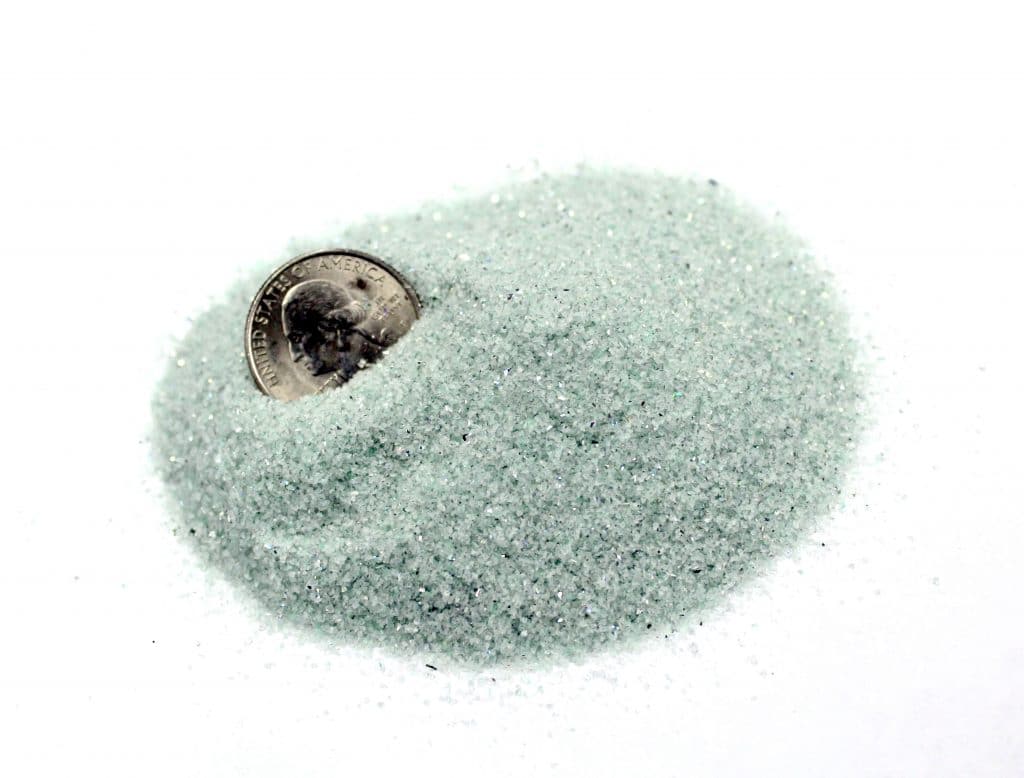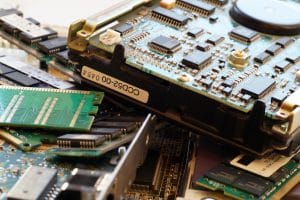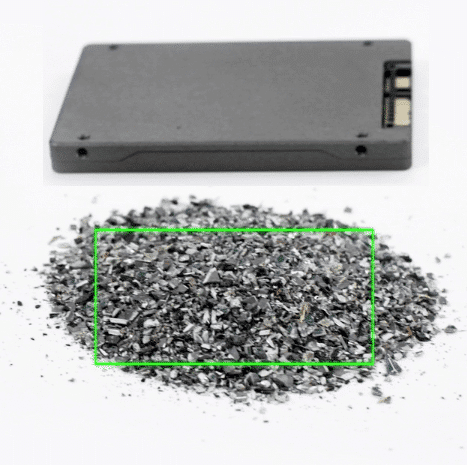With today’s intense focus on protecting and preserving the environment, the data destruction industry will play an important role. As the need to create, store, and transfer ever-larger amounts of data grows exponentially, the capability to practice destruction techniques that are not only effective but environmentally friendly will set industry leaders apart.
Since mandated particle destruction sizes for sensitive, personal, and classified information continue to decrease due to the increasing sophistication of cyber criminals at harvesting data from inadequately destroyed devices and content, these incredibly minute materials become extremely difficult to recycle. At the same time, data end-of-life destruction equipment often uses oil and other forms of nonrenewable energy to function, thereby creating additional environmental issues.
This blog discusses the various challenges the data destruction industry faces across all destroyed media types—from paper to optical media and electronic storage media—as well as the continual advances being made to steer the industry in a greener direction.
Paper
Although paper is universally considered recyclable material, there are restrictions the data destruction industry must keep in mind. First and foremost, the recycling process is such that paper must first be severely compacted in volume, since it is spread on a screen to dry. Given that tiny bits of loose paper typically get stuck in, or fall through, the screen and ruin the process, shredded paper is often rejected by recyclers.
Several U.S. municipalities do have designated drop-off points for shredded paper, but the rules vary by jurisdiction. Some larger shredding companies have existing deals with recycling centers to address this growing issue, while other recyclers charge supplemental fees for picking up shredded paper.
Fortunately, companies like SEM produce equipment that automatically compresses shredded paper into briquettes, which are generally accepted at recycling centers. In conjunction with briquettor systems, SEM also offers the industry’s only high-security, oil-free paper shredder to minimize environmental impact. With paper compacted into readily recyclable briquettes, companies can save costs by not having to pay supplemental recycling fees.
Optical Media
Optical media (e.g., CDs, DVDs, Blu-ray Discs) represent one of the greatest recycling challenges in today’s data destruction industry. Since optical discs are made of plastic resins and do not usually contain specific resin identification codes, they are commonly rejected by traditional recycling companies.
Although the Internet is riddled with “DIY solutions” for repurposing used optical discs, these options are unacceptable for companies that handle highly sensitive data, since those companies must comply with extremely rigid data destruction regulations (e.g., particle size restrictions) that prevent media storage and data reconstruction. For example, the National Security Agency (NSA) mandates that classified data on optical media must be destroyed to a particle size of no greater than 5mm2 for CDs and 2mm2 for Blu-ray Discs and DVDs. This essentially reduces the discs to dust, rendering them impervious to data harvesting.
Currently, CD Recycling Center of America does offer optical media disc recycling. The organization will take previously shredded discs as well as discs to be shredded. As of this writing, the Center offers the most complete solution for recycling shredded discs that previously stored classified, sensitive, or personal information.
HDDs are electro-mechanical data storage devices created with various metal and plastic alloys, most of which are recyclable and reusable. Although there are numerous HDD recycling options, companies dealing with classified, sensitive, or personally identifiable information (PII) must first shred or otherwise destroy physical drives to guarantee the impossibility of data recovery.
Completely shredding storage media onsite and then recycling HDDs is the best option for ensuring data destruction and practicing environmental sustainability. However, be advised: While there are many services that offer to destroy HDDs and send certificates of destruction, this does not release the company where the data originated from liability in the event of data theft or data compromise. This is particularly relevant to all companies housing sensitive data, since the internet is rife with stories about old HDDs scheduled for data destruction and recycling that are found on sites like eBay with the data still intact.
In short, the most secure (and least costly) way to ensure that HDDs are “recycle-ready” is to destroy them in-house, using equipment from companies like SEM. The destroyed materials can then be sent to certified recyclers to avoid contributing to the massive amount of nonbiodegradable e-waste that finds its way into landfills. For perspective, approximately 44.7 million metric tons of e-waste was relegated to landfills worldwide in 2016 alone.
Flash Media (USB Drives, Solid State Drives [SSDs])
Flash media take many different forms, with the most common being SSDs, USB flash drives, and cellular devices that use SIM cards. To ensure total data eradication, flash devices must be completely destroyed prior to recycling.
Publications like Wired imply that you can wipe the data clean yourself and then sell or give the device away for reuse. Again, a word of caution for companies handling sensitive, classified, or personal data: There are countless instances of old flash drives and cell phones being purchased with their data still readily accessible. According to the Department of Homeland Security Cyber+Infrastructure division, physical destruction is the “ultimate way to prevent others from retrieving your information.”
Fortunately for the green-minded organization, many materials used in the construction of flash media are recyclable after shredding. Some technology manufacturers such as Apple offer recycling options for SSDs, as do some municipal and private recycling companies. In addition, organizations like Sipi Corporation specialize in refining and recycling valuable assets. Sipi uses recyclable materials from drives and phones to create new usable compounds, as well as to harvest existing compounds such as the minimal amounts of gold and silver present in most cell phones.
At a time when organizations are more environmentally conscious than ever, it’s important to discard end-of-life physical material as responsibly as possible. The first step is ensuring complete destruction of sensitive data in-house to mitigate the risks associated with data theft and harvesting. Companies like SEM offer a variety of destruction equipment that is in compliance with the strictest protocols from organizations like the National Security Agency and the European Union’s General Data Protection Regulation (GDPR). The second step is identifying internal processes or external parties capable of recycling used physical materials so they don’t end up in landfills.






